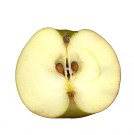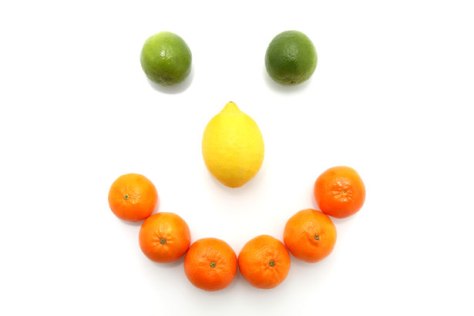I often mention free radicals and antioxidants in my posts because they are such a fundamental part of the disease process. But there was a time when I was not exactly sure what free radicals were or why they were a problem, although I was aware they were not good.
So that you have an understanding about just why I mention them so often, this week I would like to offer you a brief explanation of what free radicals actually are and what they do, and the role antioxidants play in all this.

Firstly it’s important to be aware that free radicals are a significant part of a process called oxidation, and that they are everywhere, not just in our bodies. They are responsible for the destruction of many objects in the world around us. They cause metals to rust, paint to fade, apples to brown, oils or meats to turn rancid, our skin to burn and coins to turn green, a process known as oxidation. Oxidation is a normal chemical process, and it happens right throughout nature. It is the interaction between oxygen molecules and the different things that they contact which damages cells and leads to the effects we can see.



HOW DO FREE RADICALS FORM?
To understand how free radicals come about we need to do a quick detour into the wonderful world of Chemistry 101.
All our cells are made up of lots of different molecules and molecules are made up of atoms. You might remember from school that atoms are made up of a nucleus, neutrons, protons and electrons. It is the electrons in the molecule that are involved in chemical reactions and they are the ones that bond atoms together to form molecules. They circle around the atom and form layers, or shells (forming a new layer as each one fills up) It is the number of electrons in the outermost shell that becomes important. If the shell is full up the molecule stays as it is, it is stable. But if the outer shell is not full then the molecule has to try to balance out that shell by either gathering or losing electrons to fill up or empty out the outer shell – it is better to lose the shell if it isn’t full. Another option is to share the electrons in its outer shell with another molecule that also needs extra electrons, by joining up, or bonding, so they both have full outer shells. Sometimes the bonds are weak and split which can leave an odd unpaired electron floating around, and this is a free radical.
Free radicals are unstable atoms or molecules that contain unpaired electrons. The ideal is to have all electrons paired so the free radical goes on an aggressive rampage to replace the missing electron by stealing an electron from another molecule.
The free radical is such a problem because it is unstable and highly reactive, and it goes on a rampage to capture other electrons so that it can become stable again. It will steal the electron from the closest stable neighbouring molecule. That molecule then becomes a free radical itself, because it is no longer stable, and so a chain reaction occurs. When this process starts in a cell it creates a cascade that damages the living cell. It would be simple if the cell was just killed off because the body would simply produce another one, that’s an ongoing process. But the problem here is that free radicals damage the DNA and injure the cell instead, and this provides the start of disease. The cell very quickly mutates, grows abnormally and reproduces abnormally.
QUICK SUMMARY
Just in case I lost you in that explanation here is a summary. Free radicals are toxic chemicals that damage body cells and lead to a cascade effect of damage in more and more cells, which then leads to disease. Unhealthy and damaged cells lead to an unhealthy and damaged body. Disease arises when there are damaged cells, damaged tissues and damaged organs.
“Scientists now believe that free radicals are causal factors in nearly every known disease, from heart disease to arthritis, to cancer and cataracts. In fact, free radicals are a major culprit in the aging process itself”
Lester Packer, Ph.D., The Antioxidant Miracle
WHY FREE RADICALS ARE A PROBLEM
The real danger to you lies with the chain reaction that occurs, because it means that it is not just one cell that gets damaged but a whole horde of them. The free radical creates a snowball effect where each molecule steals from its neighbour to replace the electron stolen. And it all happens very quickly, so quickly that the body’s defense system cannot keep up. It gets overwhelmed and enters a state called oxidative stress.
When attacks from free radicals keep happening in your body the result is chronic disease. Free radicals adversely alter lipids, protein and DNA and trigger a number of human diseases.
Free radical damage is now thought to make a significant contribution to all inflammatory diseases like Alzheimer’s, Parkinson’s, cancer, heart disease, cataracts and arthritis.
Your body is constantly under attack from free radicals
Here are just a few more – arthritis, vasculitis, lupus, stroke, acquired immunodeficiency syndrome, emphysema, gastric ulcers, hypertension and pre-eclampsia, muscular dystrophy, alcoholism, smoking-related diseases, and many, many others. Research suggests that free radical damage to cells leads to all the changes associated with ageing, and the associated diseases
It is quite normal for free radicals to occur within your body. In fact the body creates and uses free radicals to neutralize bacteria or virus cells. They are produced during normal metabolism. They are produced during excessive exercise, although wise exercising can help improve your capacity to deal with free radicals. They are also the result of inflammation, whether that is initiated to fight off infection or the result of long-term chronic problems.
But there are many things in our environment that can also produce free radicals when we are exposed to them – air pollution, radiation, pesticides, herbicides, X-rays, some drugs, industrial chemicals and particularly cigarette smoke. You can even trigger high free radical production by drinking excess alcohol.
ANTIOXIDANTS TO THE RESCUE
This is where antioxidants come into the picture. Normally the body is able to deal with free radicals but when their numbers increase significantly so that they outnumber the antioxidant defences, the body is unable to keep up and damage occurs. Antioxidants are very stable molecules and so are capable of donating an electron to the free radical to stabilize it without becoming a free radical themselves – they are electron donors. They are needed to maintain the critical balance with free radicals, to keep them to levels that your body can deal with. They are way your body fights rampant free radicals.
Your body can make some antioxidants, but not all, and importantly, this ability declines with age. Supplementing the body’s own production with external sources of antioxidants can make a huge difference to how it copes with oxidative stress.
Free radical damage increases with age.
There are many foods where you can get antioxidants to protect your body from free radical damage. Over the next few months I will talk about individual antioxidants but you can read about some of them here. Here is a list of the different types of antioxidants. The ORAC score assigned to a food is a measure of just how effective it is at neutralizing free radicals. The higher the score the more powerful an antioxidant it is.

Being conscious of including lots of high quality, antioxidant rich foods in your diet is a way to make sure that you get a regular, steady supply. Fruit and vegetables are the key to this because they are high in antioxidant nutrients. Legumes, nuts, herbs, spices and whole grains are some other sources. Phytochemicals that act as antioxidants are more abundant in fresh foods, and raw foods.
‘Eating a rainbow’ is the way to bring a comprehensive range of antioxidants into your diet. That is, eating lots of a wide array of different brightly coloured produce.
Bearing in mind that pesticides and herbicides are a source of free radicals themselves, it makes sense to eat organic fruit and veges as often as is possible. If you can’t afford to buy organic produce then start growing your own. Good eating is intricately interwoven with good gardening. You can grow some produce on a balcony or in a courtyard, and even if you simply supplement the commercial component of your produce it is going to make some difference. In addition, you know the produce has not been sitting around in a store for some time, that it is fresh.
There are also a number of Superfoods that have wonderful antioxidant properties including spirulina, acai, mangosteen, raw dark chocolate, many berries, beans, apples, plus many others.
It is worth noting that there are lots of different types of antioxidants and each has a different role, able to work at a different level of defense. Some such as vitamin C, stop the reaction before it starts, preventing the formation of free radicals. Others including the most potent one for this, Vitamin E, scavenge free radicals to break the chain. Others promote the decomposition of the damaged cell. You need a variety of antioxidants as your cells are protected by the combined efforts of lots of different antioxidants.
Amongst the vitamins, vitamin E, vitamin C and beta-carotene are antioxidants. They must be found in your diet as your body can’t manufacture them. Although Vitamin C, E and A all have antioxidant properties remember that many vitamin supplements are made from synthetic forms of the vitamin, and the value of using these man made versions raises questions, as they have been found to be detrimental to your health, particularly vitamin E. Look for natural sources of antioxidants in preference.
So you can see if you want to keep away the many chronic diseases caused by free radical damage that plague us today you need a broad range of good-quality foods rich in antioxidants in your diet on a regular basis to do the job.
What are your have favourite sources of antioxidants?
Disclaimer.
All information and opinions presented here are for information only and are not intended as a substitute for professional advice offered during a consultation. Please consult with your health care provider before trying any of the treatment suggested on this site.
Source articles:
http://www.ncbi.nlm.nih.gov/pmc/articles/PMC3249911
http://www.healthchecksystems.com/antioxid.htm
http://www.webmd.com/food-recipes/features/how-antioxidants-work1
http://en.wikipedia.org/wiki/List_of_antioxidants_in_food
http://articles.mercola.com/sites/articles/archive/2011/05/16/all-about-antioxidants.aspx
Related articles
- Thе Power оf Antioxidants fоr Staying Young (tomfit247.com)
- Holy Grails Of Health (naturalhealthawakening.wordpress.com)
- Exercising can make us look old!! (deakinscicomm.wordpress.com)


Thanks Natural Health Awakening, really glad you found it helpful